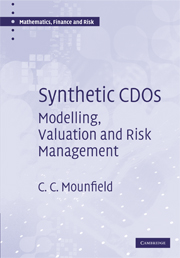2 results in Mathematics, Finance and Risk

Optimization Methods in Finance
-
- Published online:
- 06 July 2010
- Print publication:
- 21 December 2006

Synthetic CDOs
- Modelling, Valuation and Risk Management
-
- Published online:
- 06 July 2010
- Print publication:
- 18 December 2008

